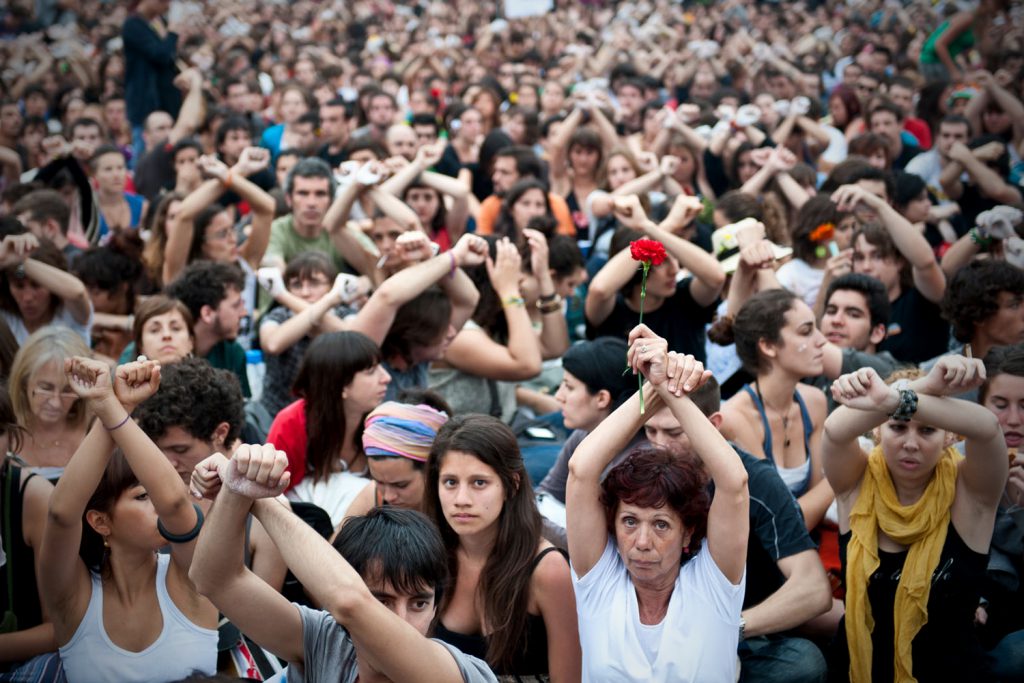Here are 6 Critical Elements of Healing. The ritual is simple once you understand their nuances.
1. Connection
The primary component for helping social despair and collective trauma move through you is a meaningful connection to others. That connection can be to your loved ones, to a group or community you feel part of, to your god, to beauty, to something that is outside of you that opens your emotional heart and leaves you with a sense of connectedness. And by meaningful I mean a connection that touches your heart in a way that makes you feel loved or good about yourself and open to life.
2. Research-based understanding of the nervous system
We now understand that the central nervous system operates in three different zones at different times. When we are in hyper-arousal, the upper zone, we can be anxious, afraid, irritable, and reactively angry. When we are in hypo-arousal, the lower zone, we can be depressed, despairing, dulled, or in denial and “checked-out.”
When we are in either of these two zones, we are not emotionally connected to others; we are “out of touch” of a meaningful connection to others. And we are “not in our right minds.” Literally, our brains are not functioning well. And of course our hearts are not open to others.
The middle zone, called the window of tolerance or zone of connection, is where we can tolerate the emotional upheavals of life and move through whatever despair or trauma we might be experiencing and not lose our connection to others or our capacity to think well. And as noted earlier, the quickest way to get back into the middle zone if we are in hyper- or hypo-arousal is by seeking meaningful connection with others. A specific goal of the ritual below is to provide a process to help you get back into the window of tolerance or zone of connection so you can fully engage with life.
3. Controlling Deep Emotions
Experiencing deep emotions can be cathartic, but in the process of healing from trauma this experience is most often not healing in and of itself. Connection to a caring, loving other is what helps it move through us. So the goal is not to go into the depth of your feelings, but to touch those feelings and then lean back into connection and love. Once you’ve done that, allow whatever wave of emotion comes up to move through you.
4. Being as specific as possible about what is disturbing you so deeply
When we can recognize social despair and collective trauma we can often identify general feelings of anxiety, anger, fear, despair, and feeling overwhelmed, but these general feelings are usually difficult to move through.
When we are deeply affected by social despair and collective trauma there is always a specific “nerve,” a personal pathway or thread that is being touched in us. This “nerve” is our individual and specific connection to the collective, and it is important to find that nerve as best we can.
If you don’t know what has been touched in you, allow yourself, while consciously calling on your connection to love, to sink your consciousness into your body and the sensations it is experiencing, following your breath. Feel specifically for the sensations of heaviness and pain in you. Then let yourself experience whatever images, stories, sounds or voices come to you. When you have touched into that place, refocus on your connection to love.
5. Beauty
We all know how beauty can touch us deeply, be it through art, nature, dance, music, or whatever form it takes, and how it affects us in places no everyday thought can go. It is very helpful while going through this process to be listening to some beautifully flowing music you like, gazing at an icon of beauty like a painting or photograph, or sitting or walking in a place of natural beauty like a forest.
6. Social Engagement
Trauma and despair usually leave us feeling separated from others and alone in the heaviness of our hearts. Getting socially engaged is good for us personally and for our communities. Most often, as we move through the emotional impact of social despair and collective trauma, we will feel inspired to do something beyond self-care.
We sometimes get involved with others who have struggled with the same despair and trauma we have, or perhaps with those who suffer other or greater injustice. Sometimes we get involved in our neighborhood or in a place where we experience fellowship. So follow whatever impulse or longing you have to become more engaged with others, be it getting involved in local politics, a civic organization or social action group, your spiritual or faith community, or maybe just a strong, focused friendship.
